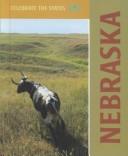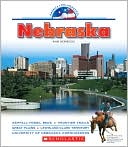My grandparents attended a one room schoolhouse in northeastern Nebraska. My mother attended the same country school for her elementary schooling. My brother’s mother-in-law met her husband while she was teaching in a one room country schoolhouse in western Nebraska. A dear friend of the family who I’ve known for all my life sat on the school board for a country schoolhouse just outside of Lincoln–the school he’d attended as a child, the school he’d sent his own children too, the school that now served some of the children in my church congregation.
I attended one of their school programs held in one of the three rooms within the little schoolhouse. Desks, tables, shelves, and learning materials were pushed aside to make room for guests and for a makeshift stage. It was an ordinary sort of program, with each of the thirty or so students performing multiple parts.
I was reminded of this school, of these schools, as I read Lynne Barasch’s A Country Schoolhouse.
 A little girl asks her Grandpa, the professor, to tell her the story of how he became so smart. The grandpa narrates the rest of the story, telling of the three room country school house he attended. He tells how their school was a working class school–how all the kids had to help their parents with the family work after they got done with school. He tells how they had spelling bees and geography bees and history bees. He tells of the games that they played in an open field. He tells of how they used an outhouse and had to be taught how to flush a toilet when the school got indoor plumbing.
A little girl asks her Grandpa, the professor, to tell her the story of how he became so smart. The grandpa narrates the rest of the story, telling of the three room country school house he attended. He tells how their school was a working class school–how all the kids had to help their parents with the family work after they got done with school. He tells how they had spelling bees and geography bees and history bees. He tells of the games that they played in an open field. He tells of how they used an outhouse and had to be taught how to flush a toilet when the school got indoor plumbing.
And he talks about how they learned. How they memorized and recited all sorts of facts. How they learned new information from what the other grades ahead of you in the room were learning–or reviewed what you’d already learned while the younger grades were learning it for the first time.
Then he describes how his family moved to the city and he started going to a city school with only one grade in each room. The school was huge and overwhelming–“But the biggest surprise of all was what those kids didn’t know.”
The grandpa in the story was the smartest kid in the new city school. As we learned at the beginning of the story, he went on to be professor–a professor who attributed his smarts to the learning he received in a country school.
Less than a year after I’d attended the Christmas program at the country school outside of Lincoln, the state board of education removed the school boards of all the “Class I” schools in Nebraska–all the small public country schools–forcing the schools to close.
They did it because they figured it wasn’t fair. It wasn’t fair that Nebraska’s primarily-white rural students should receive an education so superior to the rest of the state’s students. It wasn’t fair that some schools could be run by boards from their immediate community–by average Joes who care about kids–when the rest of the state had to have schools run by board members most of the students and parents had never met. It wasn’t fair that some of Nebraska–the part with the country schools–was spending less money to give their children an elementary education.
It clearly had to be stopped.
Despite petitions to the contrary and the best efforts of small school advocates, the forced closure of Class I schools proceeded.
Today the empty country schoolhouses dot Nebraska’s landscape, boarded up reminders of a closed chapter in Nebraska history.
Books like Barasch’s A Country Schoolhouse remind Nebraska’s readers of just what they’ve lost.
 For more comments on children’s books, see the rest of my Reading My Library posts or check out Carrie’s blog Reading My Library, which chronicles her and her children’s trip through the children’s section of their local library.
For more comments on children’s books, see the rest of my Reading My Library posts or check out Carrie’s blog Reading My Library, which chronicles her and her children’s trip through the children’s section of their local library.

 I read Bjorkland’s book first. By halfway through the book, I had to figure out who this author was. Surely, she had to be a native Nebraskan, I thought. She described Nebraska so accurately, so fully. The back cover informed me that she was not a Nebraskan.
I read Bjorkland’s book first. By halfway through the book, I had to figure out who this author was. Surely, she had to be a native Nebraskan, I thought. She described Nebraska so accurately, so fully. The back cover informed me that she was not a Nebraskan.  Heinrichs’ Nebraska, on the other hand, reads as though it came straight from the Nebraska government website, giving the facts and the nicely sanitized details specifically designed to sell our state rather than accurately portray it. What’s more, unlike Bjorkland’s book, this book patronizes students, talking with the “twaddle” tone Charlotte Mason devotees so abhor.
Heinrichs’ Nebraska, on the other hand, reads as though it came straight from the Nebraska government website, giving the facts and the nicely sanitized details specifically designed to sell our state rather than accurately portray it. What’s more, unlike Bjorkland’s book, this book patronizes students, talking with the “twaddle” tone Charlotte Mason devotees so abhor.